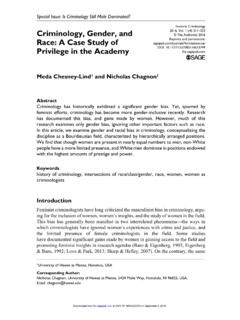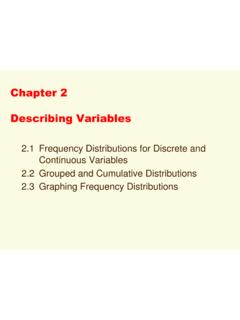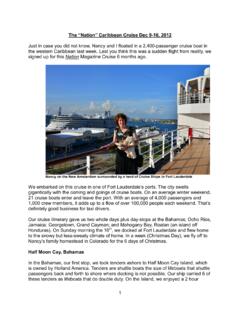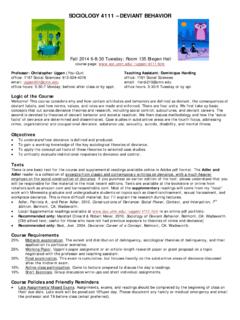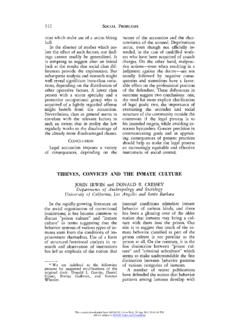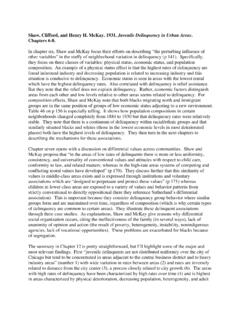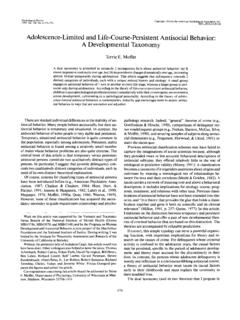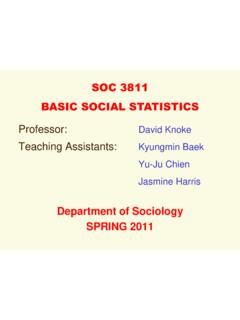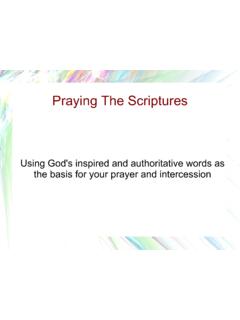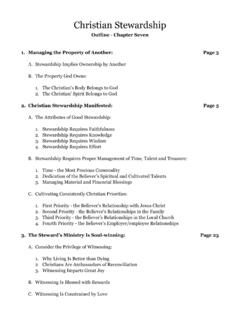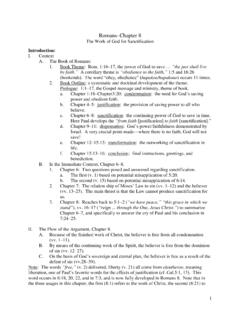Transcription of Social Movement Organizations - Sociology | Sociology
1 Social Movement ORGANIZATIONSS ocial movements & Social Movement Organizations are related: Social Movement - Collective efforts by relatively powerless groups using extra-institutional means to promote or resistsocial change ( , political, cultural, economic, ethnic, sexual identity)Pro-life & Pro-choice; NRA & Handgun Control; Civil Rights Movement & KKKS ocial Movement organization (SMO)-Named formal organization engaged in actions to advance a Movement s goalsMovements often have many SMOs pursuing change differences in the goals & tactics of these environmental SMOs?Greenpeace; Sierra Club; Audubon Society; Nature Conservancy; World Wildlife Federation; Friends of Earth; Natural Resources Defense Council; Earth Now!; Earth Liberation Front; ..Is Hamas a SMO?In last year s Palestinian parliamentary elections, Hamas (Islamic Resistance Movement ) scored an unexpected victory over Fatah. Are Hamas and other Islamic fundamentalist Organizations (Muslim Brotherhood, Islamic Jihad, Ansar Al Islam, Al-Qaeda) part of a broad international Social Movement ?
2 How closely do these Organizations goals, structures, and action fit the Social Movement organization definition?Should the SMO definition be modified to restrict both org l ends (reform, revolution) and means (lobbying, terrorism)?Hamas uses violence in its avowed goal to destroy Israel. The considers it a terrorist organization . But, Hamas also runs schools, clinics, and welfare services in the Palestine territories. Although he backs free and fair elections in the Mid-East, Pres. Bush refuses to negotiate with any Hamas-led government. Old & New Social MovementsMajor 19-20thc. Social movements were national struggles for independence from colonial rule (Norway, India, Algeria) and working-class movements for union collective bargaining Civil Rights Movement of 1950-60s was a new type of Movement based on Social -group identities. Deprived minorities sought rights of political inclusion: Latinos, Native Americans, women, gays & lesbians. With post-industrialization, many New Social Movementsemerged around cultural values, lifestyles & middle-class interests: Environmental, peace/anti-war, human rights, Social justice, consumer protection, animal liberation.
3 Many NSMs draw international participants and require transnational cooperation to achieve their collective goalsNetwork Recruiting for Collection ActionDense networks provide pre-existing channels for recruiting participants and micro-mobilization for collective action. Movement activists target friends, family, coworkers whose shared Social identities & attitudinal affinities for Movement values and goals may predispose them to activismraises barriers to mobilizing SM supporters: Rational decision is not to participate when perceived low success is outweighed by potentially heavy costs; , police violence or losing a networks can offset negative rational calculations, if people value preserving or forging strong Social ties to SM adherents. To assure compliant control, religious cultsoften recruit weakly tied persons & force members to cut links to family and Helped MADD to SurviveHow do personal networks enable SMOs to acquire resources & mobilize for collective actions to achieve organizational goals?
4 Social CapitalThe networked access to resources present in specific sociopolitical contexts. Social networks can be seen as preconditions capable of either constraining or facilitating Movement mobilization .. and also as the outcomes of Movement mobilization. Edwards & McCarthy s study of MADD found: Chapters with patronage & weakerties at founding had greatersurvival advantages Lowersurvival chances if chapter emerged from a pre-existing group or had a leader with strong tiesJohn D. McCarthyWhy did strongleader ties increase survival only when a MADD chapter de-emphasizedvictim services?MADD chapters were more likely to persist when they relied on personal Social networks to recruit new members and deemphasized victim assistance activities.. Among groups that downplay victim aid, and thereby place greater emphasis on other activities, strong preexisting leadership ties confer the expected advantages, and those advantages are substantial. (p. 645)Contingent Effects of Strong TiesChapters with strong leader ties had the lowest survival chances when they strongly emphasized victim aid(1 survivor for 5 disbanded )(26 survivors per 1 disbanded)Resource Mobilization & TacticsResource Mobilization Theory Movement growth and success requires obtaining control of resources (money & bodies)to achieve collective goals.
5 Resources can come from activists, constituents, other Organizations : churches, foundations, unions. Personal networks are major means to recruit new :Posters, petitions, Websites, teach-ins, public rallies, protest marches, sit-ins, hunger strikes, pies-in-the-faceViolent tactics:trashing buildings & burning autos, street fights, riots, assaults, bank robberies, bombings, assassinationsTo be effective, movements must convert their resources into collective actions to influence public opinion and targets. SMOs deploy a diverse repertoire of extra-institutional tactics, some of which emphasize confrontations and the disruption of conventional political SupportMovements can provoke counter-movements with opposing goals. Discuss ways to mobilize wider range of potential supporters, their resources, and their participation in one of two opposing SMOs:Assoc n of Community Organizations for Reform Now (ACORN):Mobilize a living-wage campaign to pass local ordinances requiring private businesses that benefit from public money to pay their workers a living wage.
6 Ordinances cover employers who hold large city or county service contracts or receive governmental grants, loans, bond financing, tax Fair Shake for Business:Mobilize to prevent a living-wage ordinance and the taxes on businesses & nonprofit Organizations needed to pay for them. Increased minimum wages will mean that less-skilled workers and welfare recipients won t be able to compete for jobs with better-qualified applicants. A Political-Process ModelDoug McAdams (1982) political-process model explains rise anddecline of black protest Movement with three components:1) Political Opportunity: greater receptivity to change demands2) Cognitive Liberation: challengers subjective experiences of shifting political conditions giving them a new sense of efficacy 3) Indigenous Organizational Strength: structural potential of challengers to mobilize & take advantage of political opportunityIndigenous organizational strength includes numbers of members structures of solidary incentives.
7 And communication ground for civil rights Movement , the rapid growth from 1931 to 1945 in three types of institutions gave blacks the organizational strength needed to generate a campaign of collective insurgency from 1954 to 1967: Black churches: ministers and their congregations Southern Black colleges: college students Southern chapters of NAACP: activists & lawyersSit-ins coordinated thru a well-development communication network linking SBC campuses into a loosely integrated institutional network (1982:138) Mississippi Freedom SummerRecruitment process involves strong identification with values, prior activism, and integration into supportive networks. Evidence comes from Doug McAdam s study of 961 applicants to Student Nonviolent Coordinating Committee s Mississippi Freedom Summer black-voter registration drive of to 241 who withdrew, the 720 who went to Mississippi had more org l affiliations, higher levels of past civil rights activity, more extensive & stronger prior ties to other Freedom Summer participants.
8 The differences are especially pronounced in the two strong tie categories, with participants listing more than twice the number of volunteers and nearly three times the number of activists as thewithdrawals. (McAdam 1986; see also McAdam 1988; Fernandez & McAdam 1988; McAdam & Fernandez 1990; McAdam and Paulsen 1993).Success is Becoming an InsiderOver its life cycle, a SMO may change from radical outsider to accepted political insider. William Gamson (1975) found that centralized and bureaucratized SMOs have better chances of success (gaining recognition & acceptance). Movements with complex org l structures can wage stronger action campaigns. Can you give an example of a SMO that transformed into a bureaucratic org and compromised the purity of its struggle?How can SMOs avoid twin dangers of organizational routinization and cooptation, continually renewing their energy & idealism? Is Michel s Iron Law of Oligarchy the inevitable fate of SMOs?But, as a Movement wins legitimacy & resources, it runs a risk of cooptation bought-off by minor concessions from its targets.
9 Leaders get diverted into running orgs and neglecting original goals; , building homeless shelters instead of solving root causes of homelessness. SMO #1 GovernmentWhen SMOs gain recognition, legitimacy, & access to the polity, they cease to be outside challengers. transformed into institutionalized interest groups, they now compete to influence state policies, using conventional political tactics, , campaign donations and lobbying. SMO #2 SMO #3 Interest Group #1IG #2IG #3 Penetrating the PolityThe Global Anti-Capitalist MovementDuring the 1990s, an anti-capitalist Movement began challenging globalization of benefit only to developed nations & corporations. A decentralized SMO network uses the Internetto coordinate protests by socialists, greens, labor unions, anarchists, and indigenous peoples. They seek to promote diverse interests: privatization of water rights, endangered species, child labor, forgiveness of national debts. Inspired by the Indians of Chiapas, Mexico, People s Global Action< > targets transnational institutions allegedly undermining local community control and decision-making: World Bank, International Monetary Fund (IMF), G8 Summit, World Economic Forum, World Trade organization (WTO)WTO Ensuring Free Trade?
10 The WTO is the only global international organization dealing with the rules of trade between nations. At its heart are the WTO agreements, negotiated and signed by the bulk of the world s trading nations and ratified in their parliaments. The goal is to help producers of goods and services, exporters, and importers conduct their business. < >The WTO, created in 1995, is a primary target of activists in the anti-corporate globalization WTO multilateral trading system is negotiated and signed by governments. Contracts guarantee member nations trade rights & bind governments to keep trade policies within agreed limits. Purpose is to ensure that trade flows as predictably and freely as possible, by helping producers, exporters, and importers of goods and services conduct their business WTO principles: Trade without Discrimination and Promoting Fair Competition among A New Evil Empire?Anti-globalists criticize the WTO for its allegedly undemocratic decision-making and lack of openness in reaching agreements.
